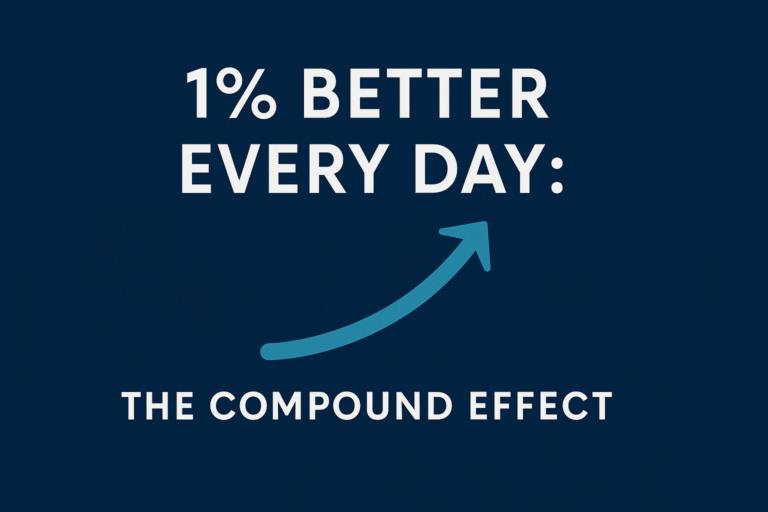Ever feel like you’re spinning your wheels—busy all the time, yet going nowhere fast? I know the feeling. Early in my twenties, I was working 60+ hours a week, dabbling in everything from online side hustles to real estate, hoping something would click. But deep down, I had no idea what I was actually building toward. I didn’t need more hustle—I needed vision.
And that’s what changed everything.
In this post, we’ll break down the power of vision, why it matters more than motivation, and how it can turn chaos into clarity in your life, business, and future.
What Is Vision (and What It’s Not)?
Let’s get clear on what vision really means. It’s not just setting a goal like “make six figures” or “buy a house by 30.” Those are milestones. Your vision is the bigger picture. It’s the why behind what you do and the where you want your life to head. It’s the target that we are consistently trying to hit. Without vision, life can seem meaningless and aimless. Proverbs 29:18 ” Where there is no vision, the people perish…”
Vision vs. Motivation
Here’s a key distinction:
- Motivation is the fuel — it gets you going.
- Vision is the GPS — it tells you where you’re headed.
Motivation can burn out. Vision lasts. And when things get hard (because they always do), vision is what pulls you forward when motivation fades. Vision will be the conviction that keeps you going.
Why Clarity Changes Everything
The Brain Needs a Target
Your brain is constantly filtering information through something called the Reticular Activating System (RAS). It tunes in to what you tell it is important. That’s why if you’re thinking about buying a white Tesla, suddenly you start seeing white Teslas everywhere.
The same thing happens when you have a clear vision. You start to notice the right people, opportunities, and ideas that match your vision. That’s the power of vision—it programs your brain to recognize what aligns with your desired future.
Decision-Making Becomes Effortless
One of the biggest game-changers in my life was when I wrote down my first vision. Suddenly, I had clarity. And I had a revelation. Everything else was a distraction.
- Should I take this job or promotion? Only if it moves me closer to my vision.
- Should I start this side hustle? Only if it aligns with where I’m going. If not, it’s a distraction.
- Should I move to another state? Only if it brings me connections that will get me closer to my vision.
- Should I study and get a degree? If it is the best and fastest path toward my vision.
You see, clarity cuts through the noise. Quickly, you realize all the things you have been wasting your time on. And the things you should be taking action on, but have been overthinking. Every action should gravitate you closer to where you want to go. If not, you do not have clarity.
Real-Life Examples of Vision at Work
Steve Jobs: Designing the Future
Steve Jobs didn’t just want to sell computers. He envisioned beautifully designed tools that made life easier, more creative, and more connected. That vision shaped every product Apple made. It wasn’t about chasing trends—it was about building a future he already saw in his mind. Selling computers is not compelling enough to want to build an empire that lives beyond him. However, his vision was strong enough to give him the conviction to continue building and innovating. That’s the power of vision.
My Story: Vision Over Vibes
After years of bouncing between side gigs, I got serious. I wrote a vision statement:
“I’m helping young people build lives of freedom—financially, emotionally, and spiritually—by providing education, tools, and mentorship.”
From that moment, everything I did started pointing in one direction. Through the vision, it has brought motivation and conviction to wake up every day and bring value to others.
How to Create a Clear Vision
1. Ask the Right Questions
To clarify your vision, start with these prompts:
- What do I want my life to look like in 3–5 years?
- Is the life I’m living right now where I want to be?
- What do I want to be known for?
- What legacy do I want to leave behind?
- Then, what is one action I can take today to move me closer to my vision?
2. Write It Out
Your vision should be specific and emotionally compelling. A weak vision sounds like:
“I want to be successful.”
A powerful one might say:
“I envision waking up every day to run my own purpose-driven business, impacting thousands of lives, with time to travel and be present with my future family.”
3. Visualize It Daily
This may sound cheesy, but it works. Athletes do it. High achievers swear by it. Spend 5 minutes a day visualizing your future with detail—where you are, what you’re doing, who’s with you. It primes your brain to expect that future.
Dr. Joe Dispenza, a well-known expert on neuroplasticity, writes that “when you mentally rehearse your ideal life, your brain begins to fire in new ways, forming new neural connections” (Dispenza, J. “Breaking the Habit of Being Yourself”)—a perfect illustration of the power of vision. With a clear destination, our brains will find the clearest and fastest path for us to get there.
Common Pitfalls to Avoid
1. Waiting for the Perfect Plan
You don’t need a 50-page roadmap to get started. Your vision doesn’t have to be perfect; it just has to be real. At first, it might be a lot of writing and refining, so don’t sweat if you don’t get it right the first time. But most importantly, don’t get stuck overthinking it and not create one.
2. Letting Fear Shrink Your Vision
Sometimes we write visions based on what we think is realistic, not what we actually want. Don’t play small because of where you are right now. Your vision should stretch you and always stretch you.
3. Copying Someone Else’s Vision
It’s okay to be inspired by others, but your vision has to be yours. What energizes them may not fulfill you. Remember, it must bring conviction to you, not someone else.
How to Turn Your Vision Into Action
Break It Into Milestones
Let’s say your vision is to be financially free and run your own coaching business. Great.
- Year 1: Learn marketing, build an audience
- Year 2: Launch offer, get the first 10 clients
- Year 3: Go full-time, scale income
This is how you bring your vision to life—step by step.
Revisit and Adjust as Needed
Your vision may evolve, and that’s okay. Review it every 6–12 months and update it as you grow.
Final Thoughts: You’re One Vision Away
You don’t need more time, talent, or money—you need clarity. The power of vision is what sets apart the intentional from the accidental.
Write your vision down. Speak it out loud. Revisit it often. When you know where you’re going, life has a funny way of getting out of the way.
Because clarity isn’t just empowering—it’s magnetic.
References:
- Dispenza, Joe. Breaking the Habit of Being Yourself: How to Lose Your Mind and Create a New One. Hay House, Inc., 2012.
- Tracy, Brian. Goals! How to Get Everything You Want — Faster Than You Ever Thought Possible. Berrett-Koehler Publishers, 2004.





